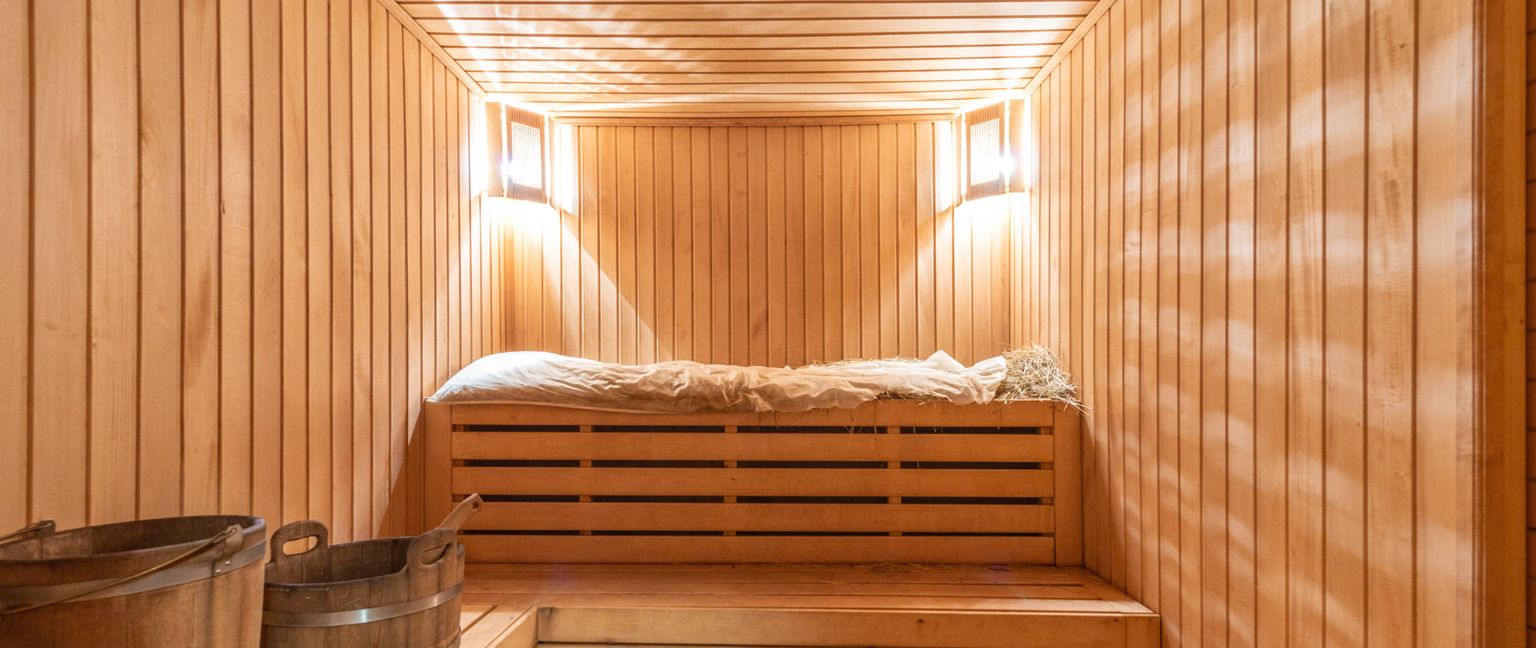Comparing Infrared and Traditional Saunas

Comparing Infrared and Traditional Saunas
Saunas have been used for centuries to promote relaxation and well-being. With advancements in technology, infrared saunas have become increasingly popular as an alternative to traditional saunas. In this article, we will explore the key differences between infrared and traditional saunas and help you understand which one might be the right choice for you.
Get weekly updates.
Understanding the Basics of Saunas
Before diving into the specifics of infrared and traditional saunas, it's important to grasp the concept of saunas and their purpose.
The Concept of Saunas
Saunas are small enclosed spaces designed to provide heat and humidity for therapeutic purposes. They typically operate at high temperatures, generating steam to create a sauna-like atmosphere.
When you step into a sauna, you are enveloped by a warm and comforting environment. The heat penetrates deep into your skin, causing your body to react in various ways. Your heart rate increases, blood vessels dilate, and you start to sweat profusely.
The origins of saunas can be traced back to ancient civilizations, where they were used for cleansing rituals and religious ceremonies. The concept of sweating as a means of purifying the body and mind has been ingrained in cultures around the world for centuries.
Today, saunas have evolved into modern wellness spaces that offer a multitude of benefits beyond just relaxation and detoxification.
The Purpose of Saunas
The primary purpose of saunas is to induce sweating, which helps eliminate toxins from the body and improve circulation. Additionally, saunas are known to promote relaxation, relieve muscle tension, and provide a general sense of well-being.
When you sweat in a sauna, your body releases a variety of impurities, such as heavy metals, alcohol, and pollutants that have built up over time. This detoxification process can leave you feeling refreshed and rejuvenated.
Moreover, the heat from the sauna causes your blood vessels to expand, which improves blood flow and oxygen delivery to your muscles and organs. This increased circulation can help reduce inflammation, ease soreness, and accelerate the healing process.
Aside from the physical benefits, saunas also offer mental and emotional relaxation. The warmth and solitude of a sauna provide a peaceful escape from the outside world, allowing you to unwind and de-stress. The combination of heat, silence, and solitude can have a profound effect on your mental well-being, promoting a sense of calm and tranquility.
Furthermore, saunas have been found to stimulate the release of endorphins, which are natural painkillers and mood enhancers. This surge of feel-good hormones can help alleviate anxiety and depression and can even improve sleep quality.
It's important to note that there are different types of saunas available, each with its own unique characteristics and benefits. Infrared saunas, for example, use infrared heaters to emit radiant heat, which is absorbed directly by the body. This type of sauna is known for its ability to penetrate deeper into the skin, providing a more intense detoxification experience.
Traditional saunas, on the other hand, use heated rocks or stoves to generate steam and heat the air. These saunas are often found in spas and wellness centers, offering a traditional sauna experience that has stood the test of time.
Whether you choose an infrared sauna or a traditional sauna, the fundamental purpose remains the same - to provide a therapeutic environment that promotes physical and mental well-being.
The Traditional Sauna: An Overview
Traditional saunas have been used for centuries and are typically made from wood, often using cedar or pine. These saunas use a stove or heater to generate heat, which warms the rocks or sauna stones to create the desired temperature. Water can be poured onto the stones to produce steam and increase humidity.
Step into a traditional sauna and you'll be transported to a world of relaxation and rejuvenation. The warm, earthy scent of cedar or pine envelops you as you enter the cozy wooden space. The crackling sound of the stove or heater fills the air, promising a comforting heat that will soothe your body and soul.
The Design and Functionality of Traditional Saunas
Traditional saunas are characterized by their solid construction, often consisting of thick wooden panels and benches that can withstand high temperatures. The craftsmanship that goes into building these saunas is a testament to the skill and dedication of the artisans who create them.
As you settle onto the sturdy wooden benches, you can feel the warmth seeping into your muscles, easing away any tension or stress. The high-temperature, high-humidity environment of a traditional sauna creates the perfect conditions for relaxation and detoxification.
The Health Benefits of Traditional Saunas
Traditional saunas offer a range of health benefits that go beyond mere relaxation. The heat and humidity can help relax muscles, reduce stress, improve cardiovascular function, and promote detoxification through sweating.
As the heat envelops your body, your blood vessels dilate, improving circulation and delivering oxygen and nutrients to your muscles and organs. The increased blood flow can help reduce muscle soreness and promote faster recovery after physical activity.
Furthermore, the deep sweating induced by the sauna helps to flush out toxins from your body. As you sweat, impurities are expelled through your pores, leaving your skin refreshed and rejuvenated. This detoxification process can also support your immune system, helping to ward off illness and keep you healthy.
But the benefits of traditional saunas extend beyond the physical. The serene environment, free from distractions, allows you to enter a state of deep relaxation. The soothing heat melts away the stresses of daily life, leaving you feeling calm and centered. It's a time to disconnect from the outside world and reconnect with yourself.
So, whether you're seeking physical rejuvenation, mental clarity, or simply a moment of tranquility, the traditional sauna offers it all. Step inside, close your eyes, and let the heat embrace you as you embark on a journey of wellness and self-discovery.
The Infrared Sauna: A Modern Take
Infrared saunas are a newer addition to the market, gaining popularity due to their purported health benefits and convenience. Unlike traditional saunas, infrared saunas use infrared heaters to emit radiant heat that directly warms the body.
The Technology Behind Infrared Saunas
Infrared saunas utilize infrared radiation to penetrate the body at a deeper level, heating it from within. The heat generated in an infrared sauna is gentle and can be absorbed by the body without creating an intense environment like a traditional sauna.
The Health Benefits of Infrared Saunas
Advocates of infrared saunas claim that they offer various health benefits, including improved circulation, pain relief, detoxification, and relaxation. Additionally, some proponents argue that infrared saunas can aid in weight loss and skin rejuvenation.
Key Differences Between Infrared and Traditional Saunas
When considering which sauna option is right for you, it's essential to understand the key differences between infrared and traditional saunas.
Comparing the Heat Sources
In traditional saunas, the heat source comes from a stove or heater, which warms the stones or rocks. Infrared saunas, on the other hand, use infrared heaters that emit radiant heat, directly heating the body without heating the surrounding air. This difference in heat sources creates distinct sauna experiences.
Energy Efficiency: Infrared vs Traditional
Energy efficiency is another factor to consider when choosing between infrared and traditional saunas. Traditional saunas require more energy to reach and maintain high temperatures, while infrared saunas are more energy-efficient since they directly warm the body without heating the air extensively.
Health Benefits: A Comparative Analysis
When it comes to health benefits, both infrared and traditional saunas offer unique advantages. Traditional saunas promote relaxation, stress relief, and cardiovascular health, while infrared saunas emphasize detoxification, pain relief, and skin rejuvenation. Ultimately, the choice may depend on your specific health needs and preferences.
Choosing the Right Sauna for You
Deciding on the right sauna for your needs requires careful consideration. Here are some factors to keep in mind when making your decision:
Factors to Consider When Choosing a Sauna
- Your desired sauna experience, including desired temperature and humidity levels.
- Space available in your home or gym for installation.
- Energy efficiency and operating costs.
- Health benefits you are looking to obtain from sauna use.
Making an Informed Decision
Whether you choose an infrared or traditional sauna, it's crucial to make an informed decision based on your personal preferences and objectives. Consider visiting a sauna facility or speaking with sauna specialists to experience both options before purchasing one for your home.
Remember, regular sauna sessions can be a fantastic addition to your wellness routine, helping you relax, detoxify, and promote overall well-being.
And if you want to track your body fat, muscle mass, and bone health over time, consider BodySpec's affordable DEXA scans. These scans provide detailed information to help you understand your body composition and make informed decisions about your health and fitness journey.


